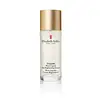What's inside
What's inside
 Key Ingredients
Key Ingredients

 Benefits
Benefits

 Concerns
Concerns

No concerns
 Ingredients Side-by-side
Ingredients Side-by-side

Water
Skin ConditioningButylene Glycol
HumectantPentylene Glycol
Skin ConditioningAlteromonas Ferment Extract
Skin ConditioningCalcium Gluconate
HumectantCalcium PCA
HumectantCapryloyl Glycine
CleansingCitric Acid
BufferingEctoin
Skin ConditioningGluconolactone
Skin ConditioningGlycerin
HumectantHydroxyectoin
BufferingLecithin
EmollientPhosphatidylglycerol
Sodium Citrate
BufferingSodium Hyaluronate
HumectantXanthan Gum
EmulsifyingPhenoxyethanol
PreservativeSodium Benzoate
MaskingWater
Skin ConditioningPropanediol
SolventButylene Glycol
HumectantPentylene Glycol
Skin ConditioningGlycerin
HumectantIsononyl Isononanoate
EmollientAlcaligenes Polysaccharides
EmollientAmodimethicone
Calanthe Discolor Extract
Skin ConditioningCalcium Gluconate
HumectantCamellia Japonica Seed Oil
EmollientCandida Bombicola/Glucose/Methyl Rapeseedate Ferment
AntimicrobialCaprylic/Capric Triglyceride
MaskingCarbomer
Emulsion StabilisingCastor Oil/Ipdi Copolymer
Disodium EDTA
Gluconolactone
Skin ConditioningLimnanthes Alba Seed Oil
Skin ConditioningMaltodextrin
AbsorbentMaris Sal
Skin ConditioningOphiopogon Japonicus Root Extract
Skin ConditioningPolyacrylate Crosspolymer-6
Emulsion StabilisingSodium Carrageenan
Emulsion StabilisingSodium Hydroxide
BufferingTocopherol
AntioxidantXanthan Gum
EmulsifyingChlorphenesin
AntimicrobialPhenoxyethanol
PreservativeWater, Propanediol, Butylene Glycol, Pentylene Glycol, Glycerin, Isononyl Isononanoate, Alcaligenes Polysaccharides, Amodimethicone, Calanthe Discolor Extract, Calcium Gluconate, Camellia Japonica Seed Oil, Candida Bombicola/Glucose/Methyl Rapeseedate Ferment, Caprylic/Capric Triglyceride, Carbomer, Castor Oil/Ipdi Copolymer, Disodium EDTA, Gluconolactone, Limnanthes Alba Seed Oil, Maltodextrin, Maris Sal, Ophiopogon Japonicus Root Extract, Polyacrylate Crosspolymer-6, Sodium Carrageenan, Sodium Hydroxide, Tocopherol, Xanthan Gum, Chlorphenesin, Phenoxyethanol
 Reviews
Reviews

Ingredients Explained
These ingredients are found in both products.
Ingredients higher up in an ingredient list are typically present in a larger amount.
Butylene Glycol (or BG) is used within cosmetic products for a few different reasons:
Overall, Butylene Glycol is a safe and well-rounded ingredient that works well with other ingredients.
Though this ingredient works well with most skin types, some people with sensitive skin may experience a reaction such as allergic rashes, closed comedones, or itchiness.
Learn more about Butylene GlycolThis ingredient is calcium salt of gluconic acid. It is a humectant, meaning it attracts water to your skin.
Gluconolactone is a PHA. PHAs are a great gentle alternative to traditional AHAs.
When applied, Gluconolactone has the same affect on skin as AHAs such as lactic acid. It helps dissolve the dead skin cells in the top layer of your skin. This improves texture and brightens the skin.
PHAs are more gentle than AHAs due to their larger structure. They do not penetrate as deeply as AHAs and take a longer time to dissolve dead cells. Studies show PHAs do not cause as much irritation.
Gluconolactone has some interesting properties:
In a 2004 study, Gluconolactone was found to prevent UV damage in mouse skin cells and has not been found to increase sun sensitivity. However, we still recommend wearing SPF daily.
This ingredient is is an created by reacting gluconic acid with an alcohol.
Learn more about GluconolactoneGlycerin is already naturally found in your skin. It helps moisturize and protect your skin.
A study from 2016 found glycerin to be more effective as a humectant than AHAs and hyaluronic acid.
As a humectant, it helps the skin stay hydrated by pulling moisture to your skin. The low molecular weight of glycerin allows it to pull moisture into the deeper layers of your skin.
Hydrated skin improves your skin barrier; Your skin barrier helps protect against irritants and bacteria.
Glycerin has also been found to have antimicrobial and antiviral properties. Due to these properties, glycerin is often used in wound and burn treatments.
In cosmetics, glycerin is usually derived from plants such as soybean or palm. However, it can also be sourced from animals, such as tallow or animal fat.
This ingredient is organic, colorless, odorless, and non-toxic.
Glycerin is the name for this ingredient in American English. British English uses Glycerol/Glycerine.
Learn more about GlycerinPentylene glycol is typically used within a product to thicken it. It also adds a smooth, soft, and moisturizing feel to the product. It is naturally found in plants such as sugar beets.
The hydrophilic trait of Pentylene Glycol makes it a humectant. As a humectant, Pentylene Glycol helps draw moisture from the air to your skin. This can help keep your skin hydrated.
This property also makes Pentylene Glycol a great texture enhancer. It can also help thicken or stabilize a product.
Pentylene Glycol also acts as a mild preservative and helps to keep a product microbe-free.
Some people may experience mild eye and skin irritation from Pentylene Glycol. We always recommend speaking with a professional about using this ingredient in your routine.
Pentylene Glycol has a low molecular weight and is part of the 1,2-glycol family.
Learn more about Pentylene GlycolPhenoxyethanol is a preservative that has germicide, antimicrobial, and aromatic properties. Studies show that phenoxyethanol can prevent microbial growth. By itself, it has a scent that is similar to that of a rose.
It's often used in formulations along with Caprylyl Glycol to preserve the shelf life of products.
Water. It's the most common cosmetic ingredient of all. You'll usually see it at the top of ingredient lists, meaning that it makes up the largest part of the product.
So why is it so popular? Water most often acts as a solvent - this means that it helps dissolve other ingredients into the formulation.
You'll also recognize water as that liquid we all need to stay alive. If you see this, drink a glass of water. Stay hydrated!
Learn more about WaterXanthan gum is used as a stabilizer and thickener within cosmetic products. It helps give products a sticky, thick feeling - preventing them from being too runny.
On the technical side of things, xanthan gum is a polysaccharide - a combination consisting of multiple sugar molecules bonded together.
Xanthan gum is a pretty common and great ingredient. It is a natural, non-toxic, non-irritating ingredient that is also commonly used in food products.
Learn more about Xanthan Gum